So you have got the dreaded weed in your tank?
Let me start by saying DON’T PANIC. All is not lost.
I turned this disaster

Into this

Algae is the most problematic in all aquariums from the simplest of set ups to the most advanced, every tank either has or will experience algae at some stage of the tanks life, and apart from the fish and plants you have, it is the most natural of things in it. I personally don’t mind some algae in my tanks and have learnt how to control it as the pictures above show, others don’t like any form of algae and go to great lengths to make sure it stays away. Trying to control algae is not as bad as it sounds.
So what is algae? How does it get into the tank? And most of all how do we get rid of it?
Algae is probably the most natural of all things in your tank, weather it is a low light tank, high tech tank, or you have just a few fish in your tank, algae is always present in some way shape or form. Were ever there is water there is always algae.
Algae uses the main 3 things that plants use to grow, algae will be come a problem when the balance is not correct and uses them to its own advantage before the plants do, this could be one of the main 3 things, e.g.: light, nutrients, c02.
For this article algae is a photosynthetic organism that needs light, water and nutrients to prosper, elements which are readily available in any aquarium. Getting rid of it from your aquarium is not very difficult. Knowing that, controlling and algae should be your goal.
There are several different types of algae that can affect an aquarium; the main four you will probably come across are brown, green, black bush & blue green (not truly algae but bacteria)
Other forms of algae include: green spot, staghorn, green water, green bush, green dust, hair thread, cladophora, rhizoclonium(as in the top picture)
There are 4 main types of algae (but more do exist) that aquariums can have.
Brown algae
Green algae
Red/brush algae
Blue green algae (cyanobacteria)
Brown Algae (Diatoms)
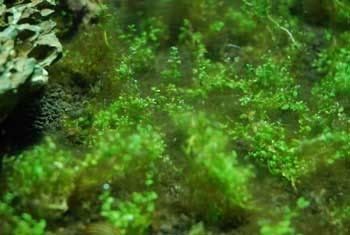

This will probably be the first type of algae any one will encounter in the aquarium and could appear from early on and will normally disappear when the tank stabilises and becomes more mature.
Brown algae could be in the form of a fluff like or spot appearance on leaves or décor.
Unless you are aiming for a high tech planted set up, it is important to reduce nutrient levels if possible, not to feed excess and keep up with full tank maintenance. As this algae grows well in low light, reducing light levels doesn’t help and could out do the green algae, so adding more light could help to rid brown algae.
If brown algae appears in an established tank then all tank stats need to be checked and lighting tubes if older than 8/12 mths may need to be replaced as they lose their intensity. Some will even change the tubes every 6mths to maintain good lighting in their tanks.
Green Algae (hair, bushy, dust)
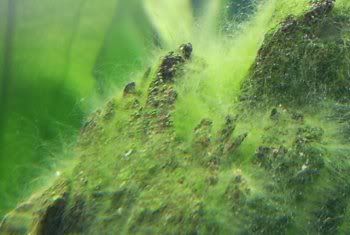
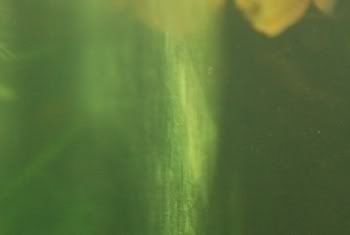
Is probably the most common of all algae you will come across in your aquarium and can take on many forms, from spots, hair, or bushy appearance.
Light green in color and can reach lengths of over 1 inch. If left on its own, it will cause problems.
It tends to grow in clumps that can easily be scraped off although it can return quickly.
Possible causes:
High light
Low c02
Low nitrate
Possible solutions
Reduce amount of lighting
Reduce nitrate levels
Increase c02
Black bush, Black Beard, BBA.
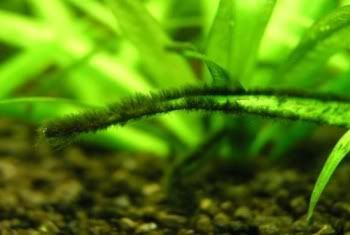
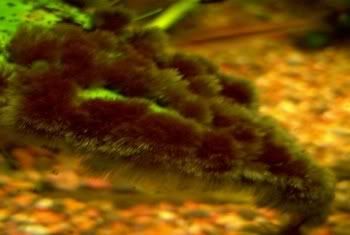
Can be found growing on leaf edges of slow growing plants, bog wood and around filters etc. Grows in clumps or patches of fine black tufts up to about 0.5cm long.
Possible causes
Low or fluctuating CO2 levels.
Could also indicate a high kH problem.
Possible solutions
Increase the levels of CO2, levels should ideally be 30ppm.
Improve water circulation around the plants
Good water flow is also important.
In low light tank reduced water changes for a time may help resolve the problem or overdosing excel to keep the c02 stable.
Blue Green Algae (cyanobacteria)
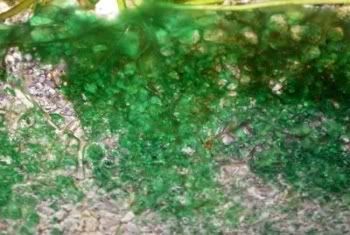
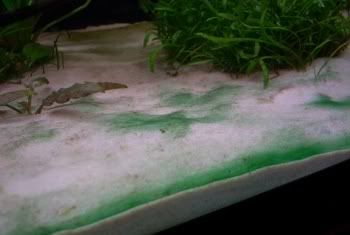
Not truly an algae but bacteria.
Covers everything in a blue/green slimy sheet. Easily peels off but grows back again very quickly. It has a foul smell. It is very commonly found in the substrate and especially along the front where gravel meets glass but also can be found at the back of the tank and on décor.
I have found from around most forums that it mostly affects tanks with bright coloured gravel; this is not always the case as it does also affect darker gravel.
Possible causes
Very low nitrates or higher levels of other nutrients.
Dirty substrates and filters can also bring it on.
Poor water circulation
Possible solutions
Check water stats
Improving water circulation can also help to reduce this algae.
If all else fails a black out could be the way to remove it.
As a last resort you could use “erythromycin” but this WIIL affect the bacteria in the filter so great care must be taken.
Green Spot Algae


Forms hard green circular spots on the glass and slow growing plant leaves.
Possible causes:
Low c02 and possible
Low p04 levels
To long a lighting period
Possible solutions:
Check CO2 levels.
Check p04 levels
Reduce lighting period
Can be scraped off the glass using a razor blade or a good magnetic glass scraper. Between 8 and 10 hours should be plenty of lighting time for the plants. If it is more then reducing it may help.
Stag horn Algae
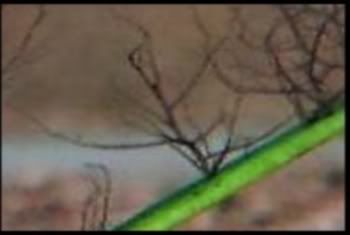

Grows in strands like a stags antlers. Black to grey/green in colour and sometimes a reddish tint.
Possible causes
Low CO2.
Overfeeding fish and excess mulm.
Dirty filter.
Also disturbing dirty substrates without doing water change afterwards.
Possible solutions
Check CO2 levels. Reduce feeding,
Vacuum the substrate and remove mulm.
Overdosing Flourish Excel may help.
Green Water:
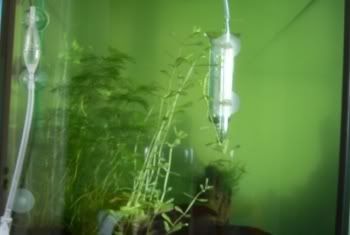
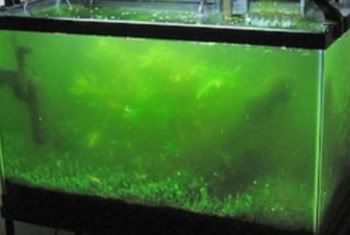
Possible causes
High lighting
High ammonia (nh4)
High nutrient levels
Disturbance of dirty substrate
Mass over feeding
Direct light on the tank
Possible solutions
Reduce lighting
Check ammonia levels
Check water stats
Check no over feeding
Check no outside light source is on the tank
Conclusion:
The above causes & solutions are not exhaustive and are only a guide to the possible cause & solution.
At the end of the day if your tank has any form of algae it will be down to the water nutrients balance weather it be a fish only tank or a planted tank. Algae can & is caused by one or more of the nutrients either being to high or to low wrong lighting or lack of c02, trying to find which one can be more difficult than removing the algae its self.
This article was originally written by MrAlgae a forum Guest (non member) back on January 12, 2008.